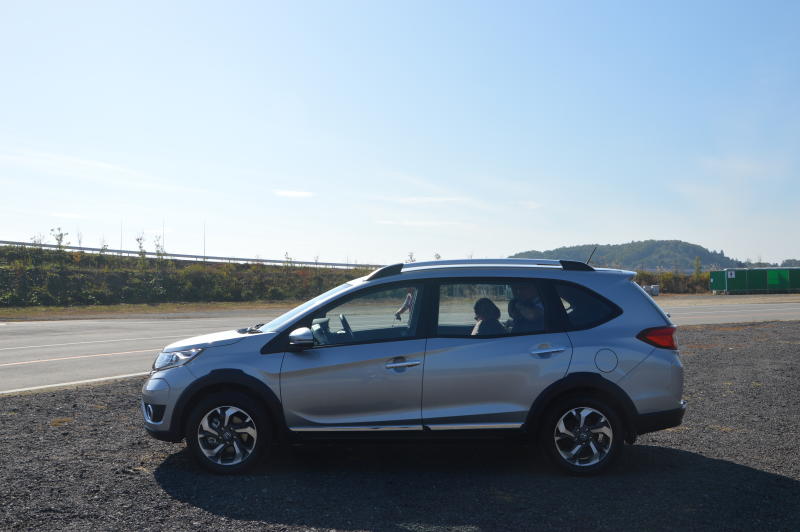
After its prototype model made a world debut at the Gaikindo Indonesia International Auto Show 2015 in August, the Honda BR-V crossover utility vehicle has stirred a lot of excitement among Asean car buyers.
Touted as having the handling qualities of a sports utility vehicle (SUV) with the roominess of a multi-purpose vehicle (MPV), the seven-seater BR-V aims to cater to large families that want a vehicle with higher ground clearance without premium price.
Recently, CarSifu had a brief opportunity to check out and drive a BR-V prototype for two short laps at an open air test pad near the Twin Ring Motegi race track, Japan.
Two short laps were not enough for us to fully appreciate all features of the prototype, but it handled competently with near sedan-like character as we stepped hard on the accelerator when tackling the bends.

The BR-V unit we drove had 195/60 R16 Bridgestone Ecopia EP150 tyres.
For us, the highlights were the spacious cabin, with practical second and third row seats that can be flipped up or folded to create more storage space.
We also liked the roof-mounted rear air-conditioner vents, positioned between the first and second row seats, which provide better air flow for rear occupants.
Concerning the powertrain, the BR-V has a 1.5-litre DOHC i-VTEC engine with 120PS at 6,600rpm and 145Nm at 4,600rpm.
This is mated to a CVT (continuously variable transmission).
When matched against its rival which has a four-speed automatic gearbox, Honda engineers claim that the BR-V is superior in terms of fuel economy as well as 0 to 100kph sprint time.

The BR-V is also said to be better in straight line stability and ride comfort, interior head and leg room, as well as rear cargo space and a large rear door area for ease of loading baggage.
To provide a better idea of the BR-V’s size and market segment, we compared it with the seven-seater Toyota Rush. The BR-V is close to the Rush in length and width, but the Rush is a tad taller by 74mm.
In terms of wheelbase, the BR-V is 25mm shorter. Both vehicles have a similar ground clearance of about 200mm. So, there isn’t really much difference in external dimensions when you put these two rivals side-by-side, at least on paper.

We like the sleek-looking design of the BR-V, which is exactly what Honda engineers wanted to portray.
Honda executives say the BR-V was conceptualised for those with active lifestyles and who want a vehicle with tough and strong looks, as well as a youthful and sporty design.
As it is aimed at large families, the design targets for the BR-V also included a long wheelbase, high ground clearance, accurate handling and comfortable ride.
The BR-V is slated to be produced at PT Honda Prospect Motor’s Karawang factory, Indonesia in January.
Estimated prices are 230 to 265 million rupiah (RM72,352 to RM83,450), depending on variant.




In Indonesia, the BR-V will also be offered with either a six-speed manual transmission or a CVT.
Exterior highlights include big roof rails for all variants, and LED connected tail light design in C-character.
Safety features include two airbags, anti-lock braking system (ABS) and electronic brake distribution (EBD), vehicle stability assist (VSA), hill start assist (HSA), and front 3-Point load limiters with pretensioner ELR seat belts and ISOFIX points.










